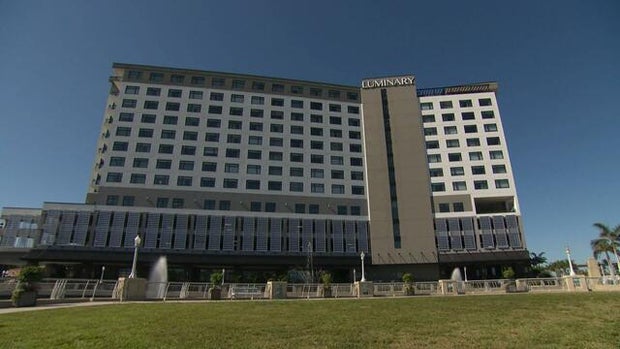Around the country, home construction and architecture is changing to keep up with hurricanes and other severe storms.
This year, the Atlantic hurricane season is expected to be a busy one, with up to 25 named storms forecast and up to seven turning into major hurricanes.
Hurricane Ian pummeled Southwest Florida in September 2022. The category 4 storm killed 150 people and caused $112 billion in damage, but amid the devastation, Fort Myers’ Luminary Hotel lost just one letter in the sign bearing its name. Architect Jonathan Rae said the building’s “purposely straightforward” design helped keep it standing.
“There are no complicated geometries, no alcoves, no recesses,” Rae explained. “All those places are opportunities for wind forces to build up and create additional stresses on the building.”
The hotel’s first floor is 15 feet above ground level, which prevented flooding inside. Backup generators are located on the building’s second floor, so they were able to keep the hotel running. A slight bend in the structure even adds strength, according to engineer Amir Aghajani.
CBS Saturday Morning
No building can be hurricane-proof, but hurricane resilience is an achievable goal, Aghajani explained. This type of construction can be costly but can help prevent paying for repairs later.
“I like to think of it as invest now or pay later,” Aghajani said. “Because what you’re doing now is you’re creating value. In this case, we can obviously see that the investment the owner made trusting us created the value that didn’t need them to pay for anything as far as damage goes.”
At Florida International University’s School of Architecture, students are studying and preparing for rising sea levels, which are expected to flood much of South Florida by the year 2100. Sara Pezeshk, a post-doctoral candidate, is using 3-D printing to develop what she calls bio-tiles that can reduce coastal erosion.
Meanwhile, Professor Thomas Spiegelhalter’s students are using artificial intelligence to plan the cities of the future. Models from other students show metropolises raised over water, with structures that mimic shapes found in nature that withstand hurricanes and other storms.
“It’s just a matter of time, and it can go quick,” Spiegelhalter said. “We have to be open to understand, to be truly efficient and designing optimum, self-sufficient, resilient structures is that we need to learn from nature because nature was here before we were here, and it’ll be here after we leave.”



